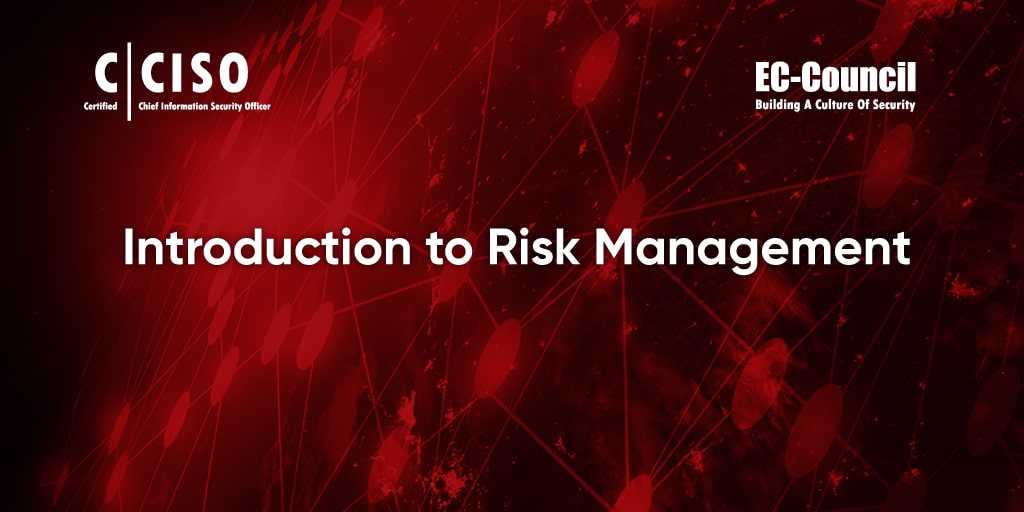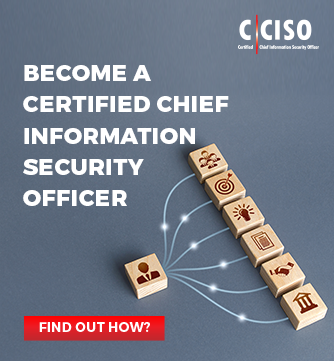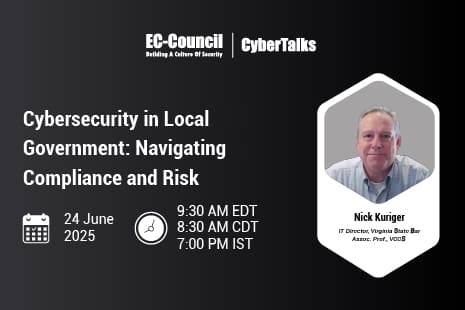Introduction to Risk Management
Risk management is a risk assessment method that analyzes and eliminates risks to mitigate threats and optimize an investment’s profits. Risk management includes the detection, review, and reaction to risk factors that are part of a company’s existence. Efficient risk management means seeking — by behaving proactively rather than reactively — to monitor potential performance. Efficient risk management thus provides the ability to reduce both the potential for a risk to occur and its potential effects.
Risk management is the detection, assessment, and prioritization of risks through the implementation of choices to track, control, and minimize the possibility or effect of unfortunate events. Risks may come from several different sources, such as market volatility, project failure, legal repercussions, financial danger, incidents, natural disasters, an adversary’s deliberate attack, or other unexpected events.

Layers of Risk Management in an Enterprise
A company faces many risks and needs specific strategy and department participation to handle the risks at various levels. Risks in a company can be classified into the following layers:
Enterprise risk management
This includes strategic risks, reputational risks, financial risks, compliance/legal risks, organizational risks, and IT risks. It covers and handles all forms of risks in an enterprise.
Organizational risk management
Operational risks are part and parcel of organizational risks that are related to structures of processes and technology.
IT risk management
The subset of operating and enterprise risks are IT risks. This covers all aspects of information technology and systems-related threats.
Cybersecurity risk management
One of the risks in the IT risk management domain is the risk of cybersecurity. Cyber risk management focuses on technology, procedures, and activities designed to protect the network infrastructure of the enterprise, information systems, programs, and data from attacks, disruptions, or unauthorized access.
Importance of Risk Management
Risk assessment is a vital mechanism because it empowers an organization with the appropriate instruments such that future risks can be properly detected and dealt with. It is then easy to minimize it once a risk has been identified. Furthermore, risk management provides a company with a base on which it can make rational decisions.
The best way for an organization to plan for eventualities that may come in the way of success and development is to assess and handle risks. When an organization assesses its strategy to deal with future challenges and then establishes mechanisms to deal with them, it increases its chances of becoming a profitable enterprise.
Furthermore, progressive risk management ensures that high-priority risks are handled as aggressively as possible. In addition to this, management would have the required data that they can use to make informed choices and ensure that the organization stays profitable.
An integral part of the risk management strategy is cyber risk management. The goal of the risk management framework is to evaluate and mitigate the multitude of new threats that come with the world of fast-track digital transformation.
Numerous elements are identified, evaluated, and rated during risk evaluations to summarize risks from high to low severity. Cyber risk management is far more than a compliance solution; it protects the IT assets of the company efficiently and maintains stability and business continuity against multiple unfortunate incidents.
Within your company, developing and implementing a risk management plan helps you minimize the risks unique to your business and reduce cyber threats. Here are the reasons why a risk management plan is essential for your organization:
- To identify and manage blind spots.
- To plan risk assessments.
- To identify emerging threats and exercise preventive measures to mitigate damages.
- To identify, manage, and counter cyber threats.
- To create and implement a robust incident response protocol.
- To streamline IT systems.
- To ensure data safety and regulatory compliance.
Risk Management Process
To achieve a 360-degree risk secure ecosystem, the following risk management processes should be followed:
Risk identification
Risk assessment
Problem-solving means defining the question and then seeking a viable solution. Nevertheless, before finding out how best to manage threats, an organization can figure out the source of the risks by posing the question: What caused such a risk and how could it affect the company?
Response formulation
Preventive measures against identified risks
The last step in the risk management process is using preventive measures against identified risks. Here, the concepts that are considered helpful in risk reduction are built into a variety of activities and then into contingency measures that can be applied in the future. The preparations will be put to motion if threats exist.
Risk Management Framework
Developed in 2010 by the National Institute of Standards and Technology (NIST) and later adopted by the U.S. Department of Defense (DoD), the Risk Management Framework (RMF) was created to serve as a criterion for improving and standardizing the risk management mechanism of information security organizations. Almost every enterprise involved in improving cybersecurity and risk control will use the system.
Risk assessment is a way of securing corporate assets and processes through the application of safety controls that facilitate the early identification and resolution of threats. This is accomplished by the RMF by helping organizations add greater structure and oversight to the life cycle of system implementation by incorporating cybersecurity and risk control into the early stages of the process of system creation.
The mechanism also supports non-governmental companies with IT risk control activities, while federal agencies are expected to implement the RMF when designing frameworks for government channels.
Risk Management Framework
By enforcing stringent controls for information security, the RMF lets organizations standardize risk protection. In order to execute it correctly, the newest version of the RMF, launched in 2018, has seven measures you need to follow. The overarching aim of the seven-step RMF technique is to obtain the process of Authorization to Operate (ATO), which is when programs will go live in a government setting.
The 7 steps to achieve ATO via RMF are:
1. Preparation
2. Categorization
3. Selection
4. Implementation
5. Assessment
6. Authorization
7. Monitoring
1. Preparation
1. Preparation
This step in Revision 2 of RMF was added by NIST, realizing the necessity of training the company to get the maximum benefit from RMF, concentrating critically on contact. According to NIST, “Prepare carries out essential activities at the organization, mission and business process, and information system levels of the enterprise to help prepare the organization to manage its security and privacy risks using the Risk Management Framework.”
2. Categorization
2. Categorization
This phase relates to how the system in question collects, stores, and transmits information. It allows you to identify how the system communicates with other IT systems and networks, to consider what you need to take compliance steps, and to create an architectural system overview.
3. Selection
3. Selection
Setting a benchmark for protection measures depending on what group the vulnerability falls under during phase one is part of the Selection step. During this step, depending on what group the risk falls under, you can make choices on what baseline protection measures you want to enforce.
4. Implementation
4. Implementation
The fourth stage consists of the application of the security steps laid down in step two. At this point, if you need to review your implementation after the next step, you can ensure that your implementation process is well established.
5. Assessment
5. Assessment
It’s time to make sure everything is running as expected during the fifth stage and that the controls are properly added to the system. The Evaluation stage is where you review to see if during execution the categories and baseline security controls defined in the first steps were properly enforced. If not, you’ll need to go back to the deployment process before you move on to the fifth stage.
6. Authorization
6. Authorization
Depending on how you perform during the appraisal process, you will progress to the sixth level. Once the categories and protection measures have been fully enforced, the authority to operate (ATO) the device will be given or rejected. If it is rejected, once it checks out, the Approve move will be delayed.
7. Monitoring
7. Monitoring
Once the system controls are deployed, they need to be constantly monitored. For just three years, the ATO issued in the fifth step is fine and the whole procedure will need to be replicated until it expires.
How to Deal with Risks
If you have recognized the various risks applicable to your organization, the next question that emerges is what the various approaches are for reducing or coping with the risks. To minimize the associated harm, there are several methods available. These include:
Risk avoidance
The safest approach to go for is to avoid the risks. For instance, an investor may think about investing in an asset that can give him good returns, but is in a situation where his money is highly devalued. In these situations, by not engaging in the deal, it is often safe to eliminate the risk entirely.
Risk reduction
Not all risks can be avoided; certain risks need to be reduced. Risk mitigation involves reacting correctly when investing in securities, stocks, or anything else. Risks are omnipresent even for corporations, with a host of assets vulnerable to attacks and getting compromised.
Risk sharing
If a risk cannot be either minimized or eliminated, it is important to take reasonable actions to share the risk in one way or another. This can be done by partnering with a third party, wherein the liability can be fairly divided between the two, or it can be agreed to do so with reasonable acts.
Risk retainment
There may be certain risks that a company or an investor must adhere to after avoiding, reducing, or sharing the risk. Retaining the risk is also an important part of risk management, as this decision is made by first determining the project’s upside potential. Once each viable option is exhausted, one can choose to retain the downside risk involved.
Role of a CISO in Risk Management
In every organization, the Chief Information Security Officer (CISO) plays a critical role in securing its information infrastructure and technology-supported activities by evaluating the security controls of information technology. The CISO’s expanding position now needs a greater emphasis on risk management thanks to digital changes and a rising number of third-party engagements.
Risk management is a mixture of techniques, technology, and knowledge of staff and customers to protect companies from cyber threats that can disrupt networks, steal or reveal confidential data and other important material, and harm the credibility of organizations. The need for cybersecurity risk management is the need of the hour, as the magnitude and number of cyberattacks increase. It entails the detection of threats and vulnerabilities and the deployment of security measures and robust solutions to ensure the safety of the company.
Six Steps to Professional Risk Management Certification
The risk management strategy may differ based on the domain, but the following six standard steps are applicable across all verticals:
1. Ascertaining certification
Cyber risk management certification differs from domain to domain. Hence, choosing the right certification for your organization is the key to a robust risk management strategy.
2. Certification eligibility & skill levels
The right type of risk management certification hinges on the candidate’s eligibility and skill sets. The better they are, the higher the certification levels they can achieve.
3. Exam registration
Online registration for risk management certification is the ideal way to acquire a top-of-the-line certification.
4. Certification completion
Depending on the education and competence level of the candidate, cyber risk management certification can be acquired via direct exams or through a series of courses that culminate into a final exam for the cyber risk management course.
5. Examination process
Cyber risk management training certification requires the candidate to clear a dedicated exam. However, depending on the domain, the cyber risk management course certification exam may also require periodic refreshers.
6. Cyber risk management certification
Once cleared, the candidate becomes a certified cyber risk management professional. However, being certified isn’t the end of the road as many organizations may require continuous education and periodic retesting to ensure that employee stays abreast of the evolving cyber risk management trends. Case in point, The National Alliance for Insurance Education & Research.
Risk Management Framework Phases
Businesses with greater levels of control and a robust risk management strategy enable the enterprise to achieve its overall goals. Companies depend on staff who have completed risk management services, training, and certifications to compose an appropriate risk management strategy. If you are keen on climbing the cybersecurity career ladder, test your skills to understand how the CCISO training program is the ideal choice for you. Here’s how it will make an impact in your career:
Exposure to new techniques & tactics
Get the competitive edge
Build your credibility
Exposure to new techniques & tactics
Exposure to new techniques & tactics
New and modernized IT strategies and methods include risk assessment systems. Working in the IT sector ensures that patterns shift from time to time, and when not constantly changed, job practices can prove to be inefficient. You will improve your expertise and ensure an enhanced quality output with the information you glean from the CCISO certification program. Furthermore, this course boosts your confidence to adopt innovative technologies, tools, and strategies for superior execution.
Get the competitive edge
Get the competitive edge
The obtaining of qualifications and credentials is the difference between qualified practitioners and ordinary professionals. Being certified as a cyber risk management professional helps you stand out in your profession and sets you apart from other specialists.
The CCISO certification shows that you have made substantial efforts to prove that your skill set is beneficial for any organization. It is important to have characteristics that separate you from the rest in today’s competitive industry. To be a winning candidate, learn how to use your experience and expertise.
Build your credibility
Build your credibility
Risk management certification shines a spotlight on your expertise. The increased knowledge you gain increases your value for the industry, while helping you deliver outstanding performance to draw more clients and gain better marketing prospects, further boosting your professional profile. Risk management certification also places you above the rest for recruiters, especially on employee recruiting websites.
Why CCISO Certified Professionals Are the Best Pick for Organizations
After the early 2000s, government agencies and businesses extended regulatory enforcement laws that investigate the risk management policies of businesses. Consequently, an increasing number of companies needed boards of directors to evaluate and reflect on the efficacy of risk management systems for enterprises. This emphasis on risk management has become one of the main components of the overall company plan.
In any organization, risk management certifications help professionals create metrics, learn how to deal with risks, and prevent mistakes in action and decision-making. Certifications encourage mechanisms for making smart choices under pressure, leveraging the values of creativity to create options, and achieving stakeholder buy-in for successful execution.
Risk management certification not only bring credibility to both the corporation and its workers, but it also offers impartial assurance that accredited employees and the agency through whom they operate are aware of industry requirements, and by undertaking comprehensive assessments, industry standard holders ensure these standards are adhered to. Organizations equipped with certified personnel often benefit from engaging with a community of certified peers with their continued professional growth, expanded skill range, and rapidly growing skills.
Career Opportunities with Risk Management Certification
Professionals certified in risk management can opt to work in a variety of domains and positions, such as Associate Risk Manager, Credit Risk Heads, Risk Consultants, and Risk Management Analysts, among many other opportunities. Since risk affects all markets and all divisions, functions, and positions within an organization, specialists from diverse industries and departments may also bring value to their current roles through structured business risk management qualifications.
The journey to becoming a qualified risk management professional usually entails undertaking multi-tiered certifications, which often involve higher-level internationally accepted designations, thus equipping individuals with knowledge of global risk systems, recognition and evaluation methods & strategies, and risk management across industries.
On average, the median salary range for risk management professionals ranges between $122,974 and $196,309 annually. This is an aspect of the work that catches every individual’s eye and is significant when it comes to opting for risk management career opportunities.











